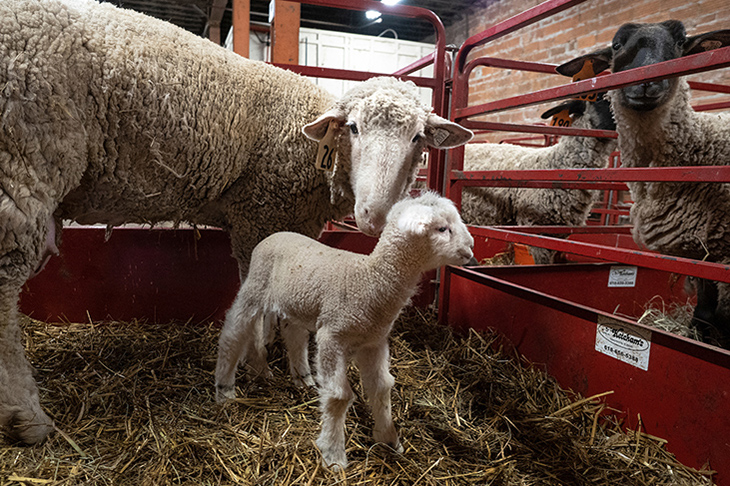
New lamb protection during wintertime explained
Tuesday, February 16, 2021
Adult sheep are capable of enduring colder weather, but lambs are not. Lamb owners need to manage accordingly, said an Oklahoma State University expert.
“Sheep are most comfortable at temperatures between 45-70 degrees Fahrenheit,” said Dr. Barry Whitworth, OSU Extension veterinarian and food animal quality and health specialist. “It doesn’t have to be an arctic blast to negatively affect lambs. Low temperatures combined with wet weather are always a concern.”
Hypothermia – a dangerously low body temperature – is a major cause of death in young lambs. Newborn lambs have limited energy reserves and a large surface-area-to-bodyweight ratio, which means they lose body heat rapidly, particularly if they are cold and wet. In addition, lambs that do not feed within the first few hours after birth will soon run out of energy reserves to keep warm.
Symptoms of hypothermia include a hunched posture, lethargy, hollowed-out sides, excessive bleating and dehydration. A lamb’s rectal temperature can be taken to confirm hypothermia. Normal lamb body temperature is 102 degrees; a reading below 99 degrees indicates severe hypothermia.
“Newborn lambs less than five hours old typically have sufficient energy reserves to get up and feed,” Whitworth said. “The ewe’s natural colostrum passes on specific antibodies that help protect the newborn from infection. It is also high in energy, which helps the lamb maintain body temperature.”
Chilled lambs need to be warmed. Producers may use several methods such as heating boxes, hot water bottles, heating pads and heat lamps to accomplish the task. The process needs to be monitored closely. Warming a lamb too quickly can be fatal. Although warm water baths will work, they are not recommended as the lamb’s body temperature can rise too quickly. It also may wash the scent off the lamb, making the ewe less likely to claim it.
“Don’t feed a cold lamb less than five hours old if it has not nursed from its ewe,” Whitworth said. “Instead, warm the lamb first and then feed colostrum. A severely hypothermic lamb is not able to digest colostrum, milk or milk replacer. Again, take care to avoid overheating a newborn.”
If the lamb has severe hypothermia and is more than five hours old, the newborn should be dried and warmed. Once the lamb’s temperature reaches 99 degrees and the animal can swallow, it should be fed colostrum or milk with a stomach tube. Once the lamb’s body temperature registers 101 degrees, it should be returned to the ewe.
“Lambs that are too weak to hold up their head and cannot swallow will need to be given an intraperitoneal glucose injection before warming,” Whitworth said. “Naturally, these lambs need to be watched closely.”
Typically, new lambs should be penned individually for 24 to 48 hours. Do not let them go outside in wet and windy conditions. While they can survive outside after they have acclimated, it is best to give them a day or two of less stressful weather conditions first.
Whitworth offered additional insights about hypothermia and lambs on a YouTube video segment from the agricultural television program SUNUP.
OSU Division of Agricultural Sciences and Natural Resources fact sheets detailing research-based information about sheep and lamb management practices are available online and through all OSU Extension county offices.
MEDIA CONTACT: Donald Stotts | Agricultural Communications Services | 405-744-4079 | donald.stotts@okstate.edu
